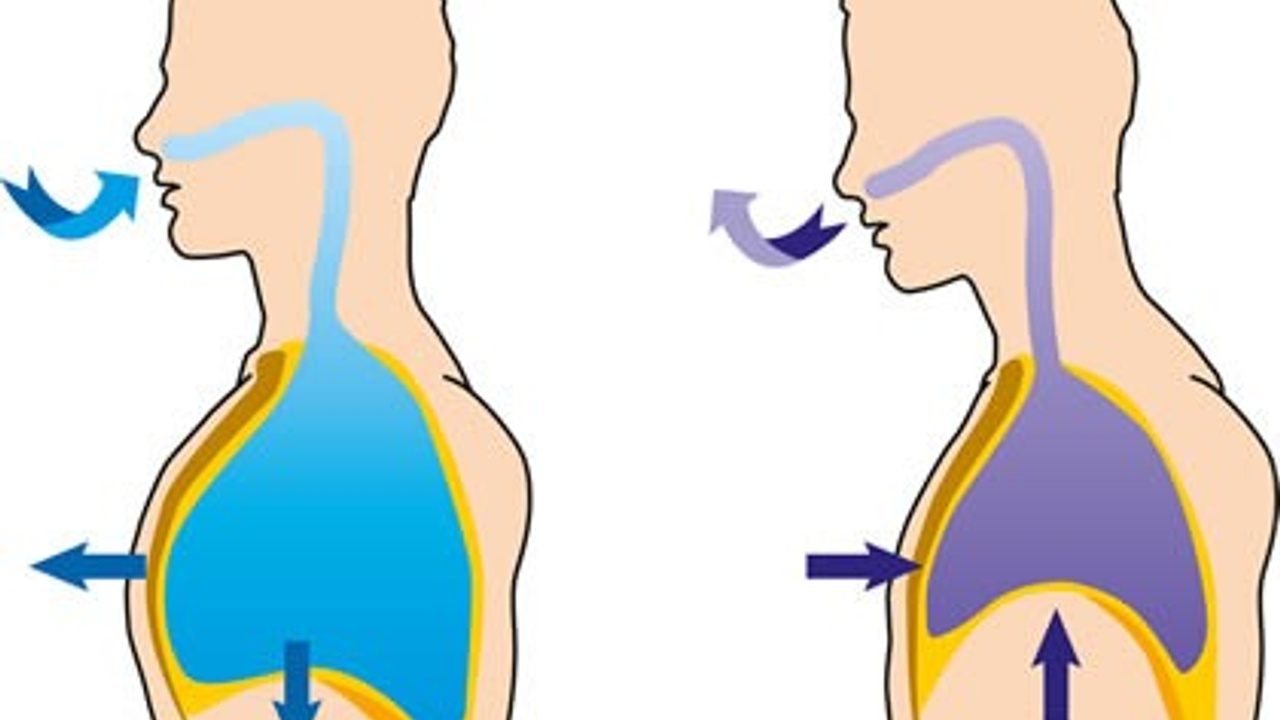Improve Core Stability and Posture with Diaphragm Training
May 29, 2014
The diaphragm has a dual role in the body: respiration and posture. When these actions occur simultaneously, we improve our core stability. This is particularly evident in the lumbar spine. My last blog, My Low Back Hurts Because I Can’t Breathe, described the diaphragm’s role in breath. Now, this blog will look at the diaphragm’s role in postural stabilization.
So, how does the diaphragm produce core stability? Through pressure. When you inhale, the diaphragm descends into the abdominal cavity, reducing the pressure in the thoracic cavity, which draws air into your lungs. This expansion of the diaphragm downward is then countered by contraction of the transverse abdominis to the front, the multifidi (spine muscles) to the back and the pelvic floor below. The increased intra-abdominal pressure creates stability. In other words, if breathing is shallow and the diaphragm is underutilized, this pressure will not travel low enough to secure and protect the lumbar spine, leaving it vulnerable.
Julie Wiebe, PT refers to the muscles of breathing - diaphragm, transverse abdominis, multifidi and pelvic floor - as gears. As she explains, the coordination of these gears creates what she calls the “anticipatory core.” This system needs to fire before we move so that it can provide stability and prevent compensations, injuries and pain.
The diaphragm is a skeletal muscle!
Just like your biceps or hamstrings, the diaphragm similarly responds to conscious control. You can also strengthen it with exercise. Unfortunately, the flip side is that it can also be under stimulated and weak. Before I was introduced to Julie’s work, I had not really considered the diaphragm in this way. To be honest, I hadn’t considered the diaphragm and its influence on postural alignment and core stability at all.
Let me explain. The diaphragm is strengthened through breathing. In a natural breath, the lower lungs fill first, expanding your ribs outward in all directions near the level of your belly. Next, the breath will move up toward the heart and finally into the chest, raising the ribs. Envision a wave of air moving from your belly to your throat. Exhalation follows the same pattern in reverse. The air in the chest is released first and progresses down to the belly. Stress, fear and anxiety can interrupt our natural breathing pattern, resulting in a predominance for chest breathing. This not only jeopardizes core stability but also reduces breathing efficiency.
Train your diaphragm and enhance your respiration and posture by practicing the following progressive breathing exercise.
Global Breathing Exercise
Start by lying on your back with your knees bent in a comfortable position. This exercise takes you through specific breathing focus areas which are then combined.
-
- Focus 1: Expand your breathing forward and backward. Feel your lower lungs fill with air and your lower torso grow bigger front to back. You should feel increased contact with your back on the floor as it fills with air.
- Focus 2: Expand your breathing up and down. Imagine breathing along the length of your spine, stretching it from each end.
- Focus 3: Expand your breathing side to side. Place your hands on your sides just above your lowest ribs and press in slightly. Breathe into your hands, pushing them away from your body as you inhale.
- Focus 4: Breathe in all three directions simultaneously.
- Focus 5: Emphasize the lift of the pelvic diaphragm which, as Julie points out, works in tandem with your respiratory diaphragm. Upon exhale perform a slight upward pull of your pelvic floor (Kegel) as the respiratory diaphragm also moves up.
- Focus 6: Lengthen your exhale and feel your deep abdominal muscles contract to push the air out of your lungs. Your exhale should be twice as long as your inhale.
Breathing happens whether we are aware of it or not, thank goodness! Tuning into your breathing regularly and practicing this exercise once daily will elevate your awareness and strengthen your breathing muscles. Better breathing can raise your endurance, energy and mood.
Client Story
After attending my posture fitness class where we practiced the global breathing exercise, one of participants found herself full of energy in the evening. She couldn’t figure out why she was going so strong that late into the night. After considering the possibilities, the only thing she could find different about the day was doing this new breathing exercise in class. She was shocked and pleased that something so simple could have such a profound impact. That experience convinced her to commit to a regular breathing practice
I’d love to hear what you find when doing the global breathing exercise! Please leave a comment below.
Stay connected with news and updates!
Join our mailing list to receive the latest news and updates from me.
Don't worry, your information will not be shared.
We hate SPAM. We will never sell your information, for any reason.

